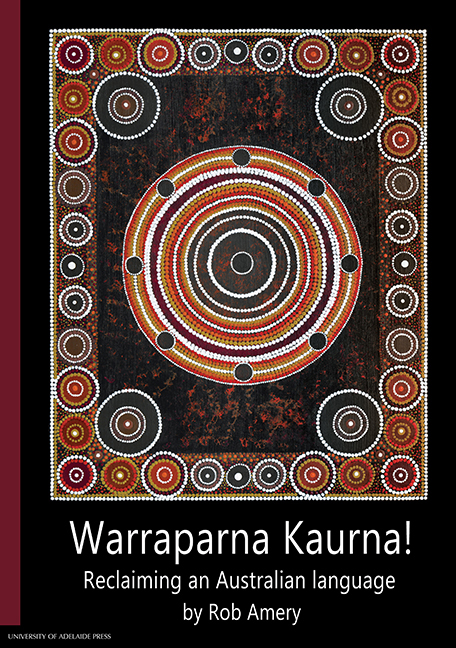Book contents
- Frontmatter
- Contents
- Maps, Plates, Graphs and Tables
- Preface to this Edition (2016)
- Foreword to the 2000 Edition
- Preface to the 2000 Edition
- Acknowledgements
- Abbreviations
- Conventions and Terminology
- Chapter 1 Locating the Study
- Chapter 2 Language Reclamation
- Chapter 3 An Ecological Approach to Language Revival
- Chapter 4 A Sociolinguistic History of Kaurna
- Chapter 5 Kaurna Sources
- Chapter 6 Restoring and Transforming the Kaurna Language
- Chapter 7 Kaurna Language Programs
- Chapter 8 Kaurna in Society
- Chapter 9 Kaurna Language Revival: The Formulaic Method
- Chapter 10 Sociopolitical Dimensions of Kaurna Language Revival
- Chapter 11 Into the Twenty-first Century: Developments since 2000
- Chapter 12 Summary and Conclusions
- Bibliography
- Index
Chapter 6 - Restoring and Transforming the Kaurna Language
Published online by Cambridge University Press: 28 July 2017
- Frontmatter
- Contents
- Maps, Plates, Graphs and Tables
- Preface to this Edition (2016)
- Foreword to the 2000 Edition
- Preface to the 2000 Edition
- Acknowledgements
- Abbreviations
- Conventions and Terminology
- Chapter 1 Locating the Study
- Chapter 2 Language Reclamation
- Chapter 3 An Ecological Approach to Language Revival
- Chapter 4 A Sociolinguistic History of Kaurna
- Chapter 5 Kaurna Sources
- Chapter 6 Restoring and Transforming the Kaurna Language
- Chapter 7 Kaurna Language Programs
- Chapter 8 Kaurna in Society
- Chapter 9 Kaurna Language Revival: The Formulaic Method
- Chapter 10 Sociopolitical Dimensions of Kaurna Language Revival
- Chapter 11 Into the Twenty-first Century: Developments since 2000
- Chapter 12 Summary and Conclusions
- Bibliography
- Index
Summary
This is the seed from which this language grows. Let's make it grow.Language is evolving too … So I've got no problems about that [developingneologisms/language engineering]. But I still want to know that the guts ofthose originated from here [Adelaide]… for the future survival of ourlanguage then these are the things we need to do if we're going to revive thelanguage. But I've got to know where it comes from.
(Katrina Power, interview, 9 December 1996)The seeds of the language that Katrina refers to are the Kaurna sources described in the last chapter. From these materials our task is to develop a language that meets the needs and aspirations of the contemporary Kaurna community and can be taught in formal language programs. The reclamation of Kaurna involves efforts both to ‘restore’ the language to its former state and to ‘transform’ it to meet the needs of the 1990s.
It is too early to describe the ‘Modern Kaurna’ language comprehensively. Norms of usage are only just beginning to emerge. In this chapter I shall apply the language reclamation method to Kaurna, through an exploration of certain areas of the language and an analysis of current efforts to restore and transform it. To date, most effort has been applied to phonology and lexicon; higher levels such as discourse phenomena remain largely unexplored territory.
The Kaurna language will evolve slowly. It must develop at a pace acceptable to the Kaurna community and in a way that involves Kaurna people centrally. To rush language development would risk alienating the language from the community.
Fortunately, as we saw in Chapter 5, there is one main set of Kaurna resources compiled by the German missionaries and others who followed their methods. These, especially T&S and TMs, constitute the backbone of the Kaurna language. Other sources are appealed to only when these main sources are found wanting. The primary Kaurna sources themselves are interpreted in the light of what we know of closely related languages, and of Australian languages in general. Related languages are utilised in varying ways, seldom directly, to fill gaps and as models for modernisation of the language. Indeed, quite unrelated languages, such as Maori, Hebrew, Cornish, Latin or Esperanto also provide inspiration, as their promoters have been grappling with the issues for much longer.
- Type
- Chapter
- Information
- Warraparna Kaurna!Reclaiming an Australian language, pp. 128 - 171Publisher: The University of Adelaide PressPrint publication year: 2016



